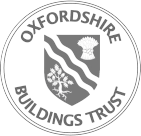


The dovecot dates to the 16th or early 17th century. It is built of red brick and is octagonal in plan. Under the eaves is a corbel of moulded brick forming trefoil arches. The brick headers below forming various patterns are vitrified and appear blue in colour with a glazed effect.
There are two small dormers in the roof and a lantern to allow entry/exit for pigeons. The walls inside are lined with nesting boxes and there are ledges on which the birds would perch.
Dovecots were used to rear birds and eggs for the table, while the manure collected at the base was a valuable resource for the field and garden.
In the 16th and 17th century pigeon dung provided a major source of saltpetre for the making of gunpowder – somewhat ironic when we are told that Parliamentarians in the Civil War blew up dovecots because they believed the pigeons fed off the land of the ordinary people and only the landlord got the benefit!